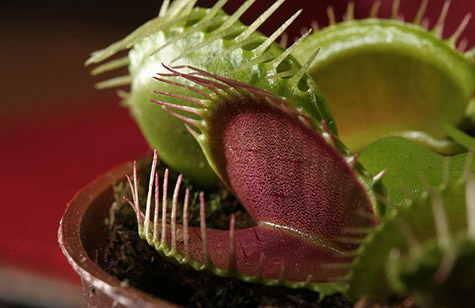
The Venus Flytrap is a fascinating plant with two leaf jaws that sense when an insect approaches and quickly snap shut, trapping the insect for a meal. The carnivorous plant is one of nature’s clearest examples of biology and mechanics working together to sustain life.
Four doctoral students at Washington University in St. Louis will have the opportunity to take a closer look at this intersection under a five-year, $921,040 grant from the National Institute of Biomedical Imaging and Bioengineering of the National Institutes of Health.
Philip V. Bayly, PhD, the Lilyan and E. Lisle Hughes Professor of Mechanical Engineering and chair of the Department of Mechanical Engineering & Materials Science, will lead the grant to train four doctoral students in mechanobiology, a developing field that focuses on how forces and changes in cell or tissue mechanical properties contribute to growth, structure and health.
More than 25 faculty members from across the university will serve as mentors to the four students.

“This training grant is unique because we have pure biologists from the Department of Biology, as well as biologists in the School of Medicine who apply biology to medicine,” Bayly said. “There are a lot of people who already involve mechanics in biological research. This is a nice opportunity because it brings them together and provides an opportunity for students to work in those interfaces.”
Blending biology with engineering and other scientific disciplines, such as physics, chemistry, computer science and math, is part of “A New Biology for the 21st Century” initiative by the National Research Council of the National Academies. The initiative is designed to integrate these disciplines to create a research community that can tackle a broad range of scientific problems.
Bayly said students in this program will be prepared to perform advanced, interdisciplinary research on the role of mechanics in biology and will fill an important and growing need in the scientific community.
The Washington University students who train under the grant will cross disciplines: those who are studying biology will take basic courses in mechanical engineering, and engineering students will take basic biology courses.
In addition, students will conduct research on a variety of length scales, from the tiniest (nanometer) to larger sizes, corresponding to structures from the molecular and cellular level to the tissue level. They will also to spend eight to 10 hours a year doing outreach activities with high school or younger students.
“Outreach helps students develop teaching and communication skills,” Bayly said. “One of the best ways for Washington University to be a good member of the community is to take all of this intellectual horsepower we have in our students and bring it to bear in St. Louis.”